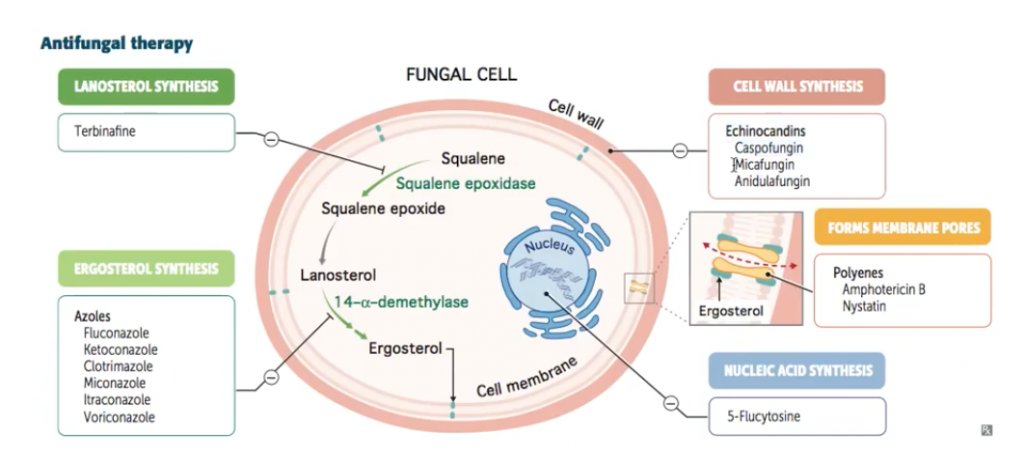T1iii: Outline the classification of fungi
Definition
Fungi – group of eukaryotic microorganisms capable of producing infection
Fungal Structure
Cell Wall
- CHO & Proteins surrounding cell membrane
Capsule
- Polysaccharide coating around cell wall
- Visualized with India Ink Stain
Microtubules
- Microtubules composed of the protein tubulin
- Involved in movement of organelles, chromosomes, nuclei and golgi vesicles
Morphology
Yeasts
- Unicellular, reproduce by budding
- C albicans
Molds
- Characterized by hyphae which result in colony formation
- Aspergillus
Dimorphism
- Have charateristics of yeast and mould
- Blastomyces dermatitidis, Histoplasma
Pathogenic Fungi
Cuteanous Infective Agents
- Fungus grows on body surface
- Tinea pedis, vaginal candidiasis
Subcutaneous Infective Agents
- Nails and deeper layers of skin involved
- Mycetoma, sporotrichosis
Systemic Infective Agents
- Involvement of internal organs
- Histoplasmosis, systemic candidiasis
